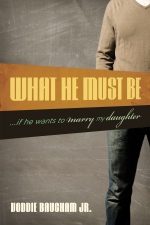 Reformation Gems are excerpts from selections contained in the Reformation Commentary on Scripture, a new commentary series from IVP which gathers the best Reformation-era comments on the text together all in one set. The volumes in this commentary series resurrect long-forgotten voices from the Reformation age and in so doing they recover the piety and vivacity of that era. I hope that by sharing some excerpts from this series, I will edify my readers and promote this important commentary series.
Reformation Gems are excerpts from selections contained in the Reformation Commentary on Scripture, a new commentary series from IVP which gathers the best Reformation-era comments on the text together all in one set. The volumes in this commentary series resurrect long-forgotten voices from the Reformation age and in so doing they recover the piety and vivacity of that era. I hope that by sharing some excerpts from this series, I will edify my readers and promote this important commentary series.
Today’s selection comes from volume 1 (Genesis 1-11). I appreciated the Christ-centered comments on Noah’s sacrifice in Genesis 8, from Johannes Brenz, originally pulbished in 1553.
Noah’s Sacrifice Had the Fragrance of Christ
Johannes Brenz: What is fragrant in the combustion of a calf, or an ox, or a goat? Especially if, along with the flesh, the bones are also burned up, which certainly produce a displeasing odor when burned! Yet it’s not what we think, that God is taken with the sweetness of an external smell. Rather, there are other things in Noah’s sacrifice that move God with pleasure. First, he is pleased with Noah’s gratitude, even as he is pleased with his care for spreading the teachings of true religion to his offspring. Finally–and this is best of all–he is pleased with Noah’s faith in the seed of the woman, in Jesus Christ, who is foreshadowed by the burnt offering. In Noah’s offering, God actually sees the sacrifice of his only-begotten Son, which would one day take place for the sins of the whole world. By this sacrifice he is so delighted that he rejoices not only to favor Noah but also to promise to preserve the earth. And by that promise, the Holy Spirit shows that the sacrifice of God’s only-begotten Son would have so much efficacy that on its account the earth would be preserved and all who believe in it would be freed from death and given eternal life–which Paul also shows in Ephesians 5[:2]: “Christ loved us and gave himself up for us as a fragrant offering and sacrifice to God.” (pg. 285)About the Reformation-era author: Johannes Brenz (1499-1570). German Lutheran reformer and pastor. Brenz was converted to the reformation cause after hearing Martin Luther speak; later, Brenz became a student of Johannes Oecolampadius. His central achievement lay in his talent for organization. As city preacher in Schwäbisch-Hall and afterward in Württemberg and Tübingen, he oversaw the introduction of reform measures and doctrines and new governing structures for ecclesial and educational communities. Brenz also helped establish Lutheran orthodoxy through treatises, commentaries and catechisms. He defended Luther’s position on eucharistic presence against Huldrych Zwingli and opposed the death penalty for religious dissenters. (pg. 356-357)
Learn more about this commentary series at the Reformation Commentary page at IVPress.com, or check out this sampler (PDF). You can pick up a copy of this latest volume in the Reformation Commentary on Scripture series at any of the following online retailers: Westminster Bookstore, Monergism Books, Christianbook.com, Amazon, Barnes&Noble or direct from IVP. You may want to consider becoming a member with IVP and getting the entire series on a subscription discount of more than 40% per volume.
Disclaimer: This book was provided by IVP. I was under no obligation to offer a favorable review.


